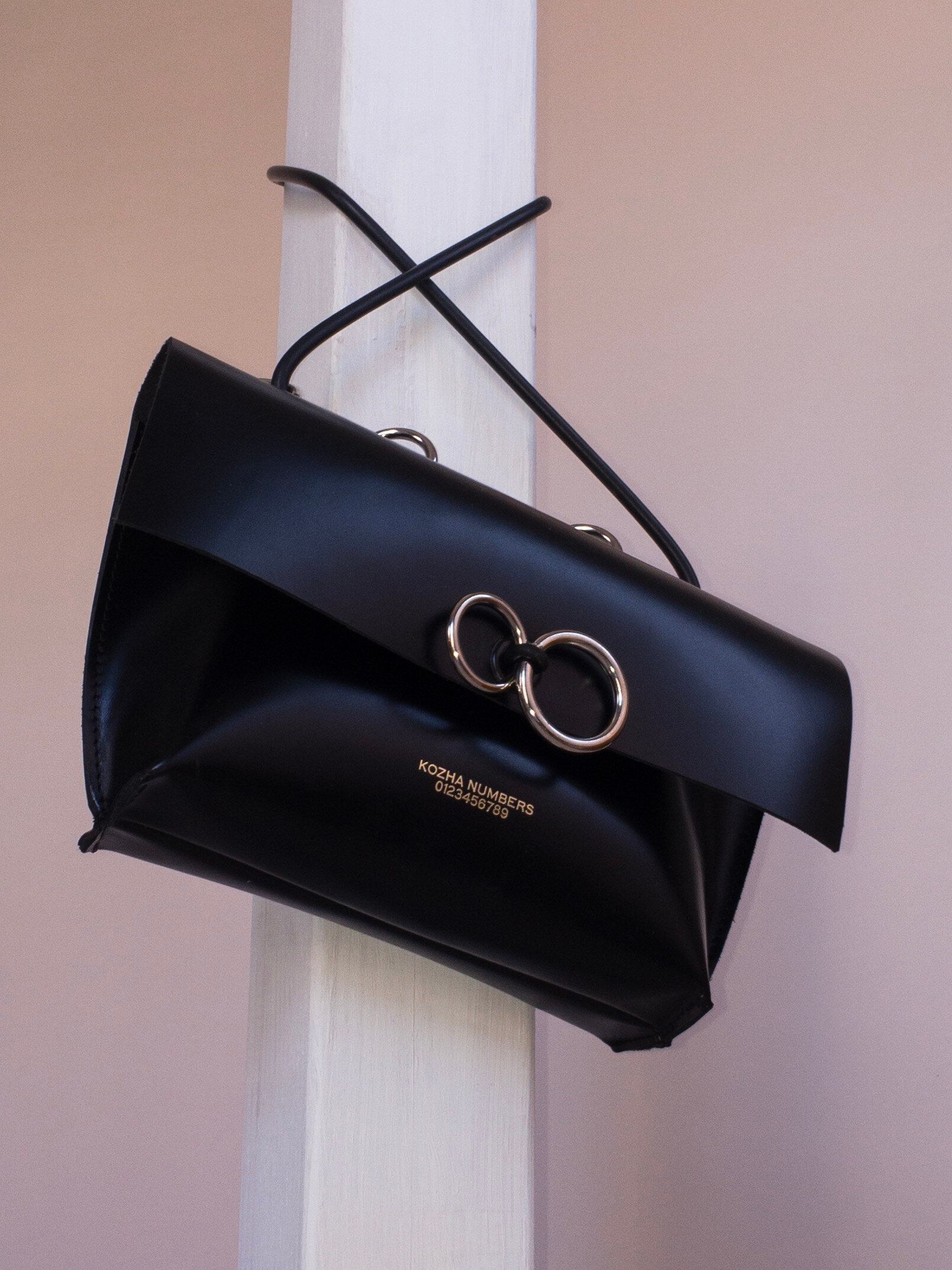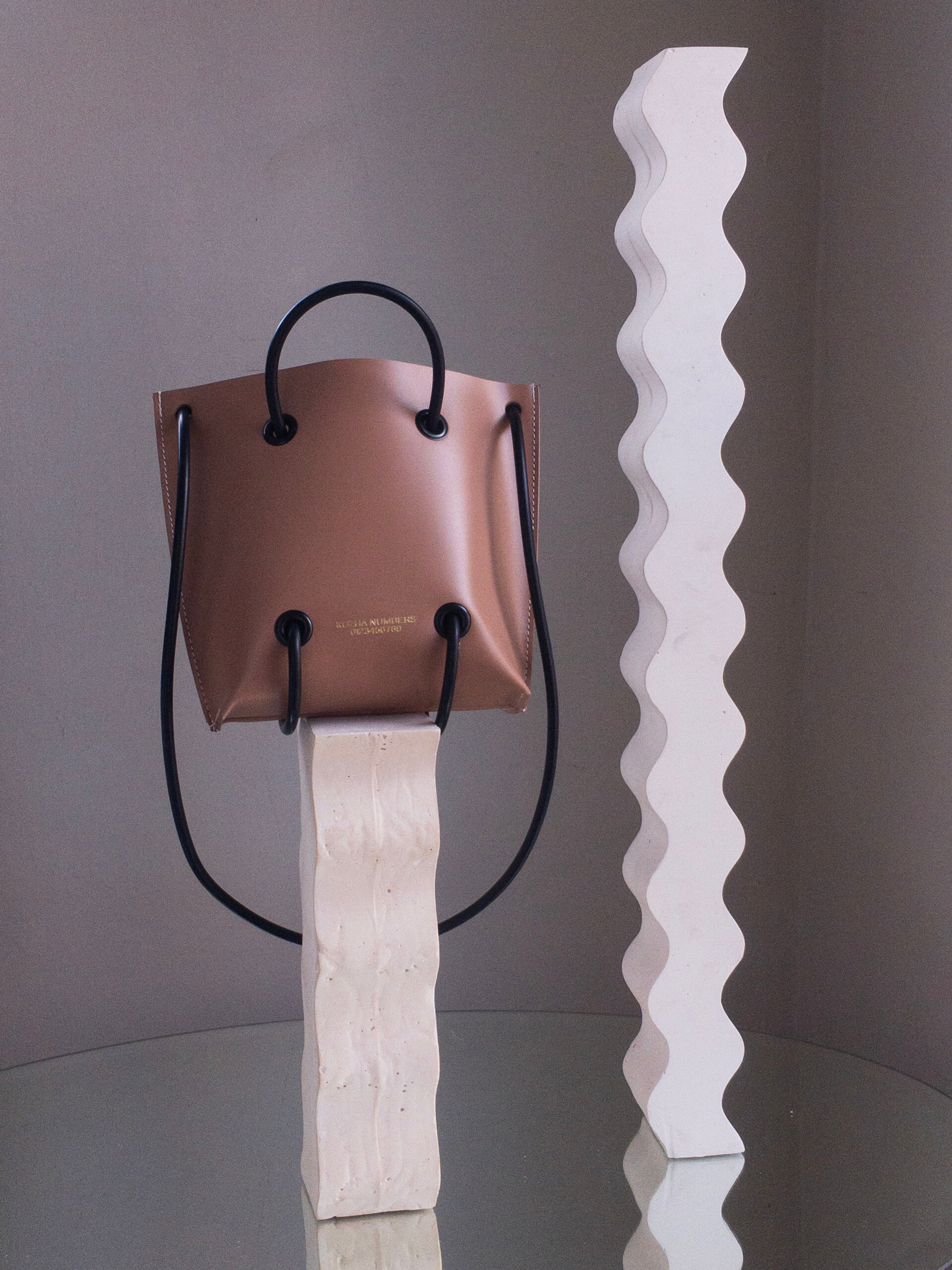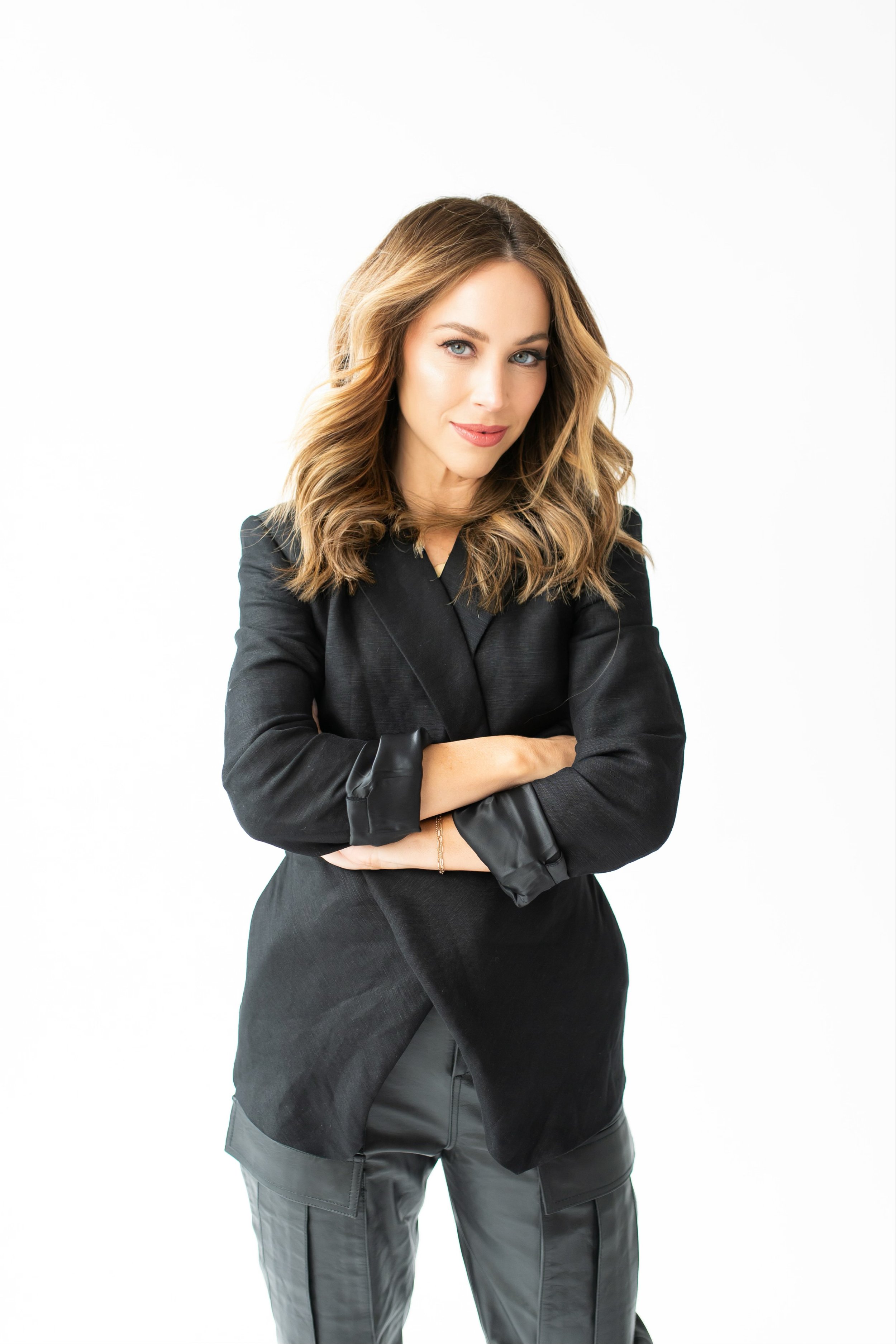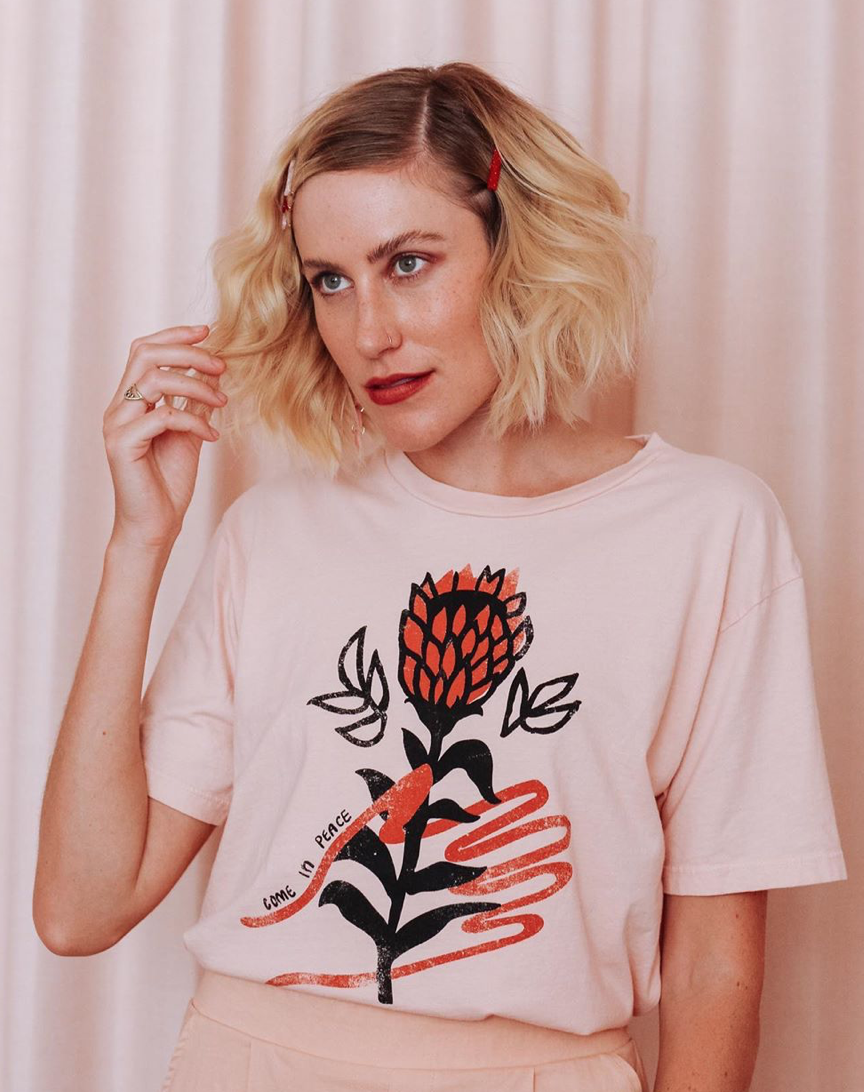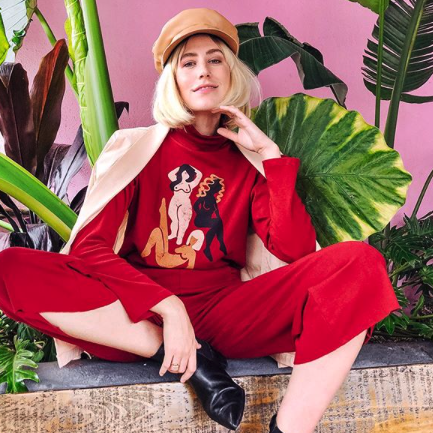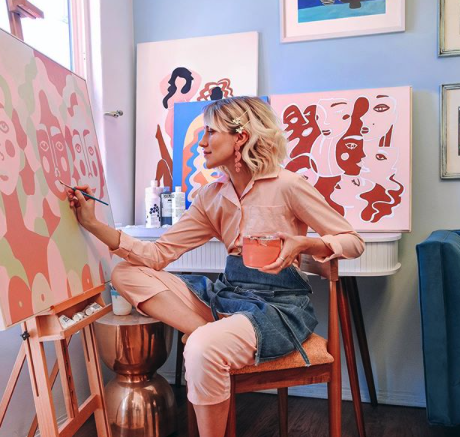New Year, New Website: Tips to Give Your Business a Fresh Look & Feel
Your website is your brand’s first impression – so make it count.
First impressions count – but did you really know how much? It takes only 1/10th of a second to form a first impression about a person. Websites are no different. According to the findings of three separate studies, it takes about 50 milliseconds (ms) (that's 0.05 seconds) for users to form an opinion about your website that determines whether they'll stay or leave.
Your website is your brand’s first impression – so make it count. When you have a clear and effective website, you are setting your business (and yourself) up for success. With the dawn of the new year, now is the perfect time to refresh your website, and set the foundation to scale your business.
To help get us started, branding expert, Joanne Tapodi, shared some tips to give your website a fresh look and feel during her ‘New Year, New Website’ Talk presented by Squarespace at the recent Future You digital festival. A Squarespace website designer, Authorized Trainer and Circle member with over 15 years of experience in graphic design, Joanne has designed over 70 Squarespace websites and developed over 100 brand identities for small business owners. She’s also trained countless people on managing their own websites.
Combining her branding skills and Squarespace knowledge, Joanne creates Squarespace websites that are brand-specific and meaningful. Read on for her tips to get your website looking on-point for 2021, and also for some insight into key trends in website design for the year ahead.
Tips for an Effective Website
When your ideal customer visits your website, we want to lead them on a journey through your site. Imagine your website as your house, and each page on your website represents a different room; you want to welcome guests in and then take them through the different rooms of the house to show them what you're all about. This is called the user journey. Here are some tips to help you design an effective user journey throughout your website.
Tip #1 – Keep your homepage simple
Your homepage should share a bit about your business and/or a bit about what you do and who you are. It provides the most important information upfront that you want the user to know, so that they can then take this information through to the other pages on your website.
Tip #2 – Use call to actions (CTA’s) to lead the user where you want them to go
Don't give away too much information on your homepage. You want to keep the user engaged throughout each page of the journey. Have at least one CTA on every page of your website to keep that journey going.
Tip #3 – Never miss an opportunity to let the user complete a purchase, book an appointment, or contact you.
Use a few CTA’s on your homepage that lead towards your largest areas of interest; this could be your services, online shop, about page, etc. Include multiple opportunities for the user to engage with your largest area of interest not just on the homepage – but on each page of your website.
Tip #4 – The journey will ultimately end at the page where you would like the user to take action; this could be a contact page to book, submit an enquiry, or purchase page.
It’s important to have a lot of connection points on your website so that people feel like they're going through the website and learning more about you more about your business. As they move through your website, the brand journey becomes quite clear to them, and they can really connect with who you are and what you’re about. Talking about connection will lead me into my next tip:
Tip #5 – Connecting with your audience in your own unique and authentic way will be what sets you apart from your competitors.
In today’s digital age, connection is more important than ever. You have a very minimal amount of time to connect with your audience and you have to establish that connection as quickly as possible. So, how do we make sure you are achieving the touchpoints to connection on your website?
Establish brand consistency across all areas – tone of voice, image content and brand colors
Nurture your connection with your audience whilst building your audience by…
Sharing informative content through different channels
Blogging
Setting up a mailing list and sending e-newsletters. Squarespace has email campaigns built straight in to the program, which is one of my favorite features
Connecting your social media accounts to your website. Squarespace also allows for easy social integration
Web Trend Forecast
Trend #1 – ’Editorial’ Web Design
Website viewership on desktop vs mobile is still roughly equal, meaning you need to cater your website for both types of viewers.
In terms of design for desktop, web page layouts are moving more towards an ‘editorial’ look and feel to engage visitors. This means lots of ‘white’ space between elements and positioning your content blocks in different ways to create unique layouts. Big text is great for headlines, which we see a lot of in editorial design, when we really want to draw people's attention with typographic and font use.
Don’t be afraid to experiment and create lots of space on the web page, whilst also being mindful of how the design will translate from desktop to mobile.
Trend #2 – Bold Colors
I see brands becoming more adventurous by using bold colors. For the last few years, minimal Scandi style with lots of white and monotone hues have been on trend, as well as pastel pinks and earthy tones. I predict we will see a lot of websites using darker backgrounds. Don’t be afraid to use color in expressive ways that suit your brand personality.
Trend #3 – Online Offerings
The shift towards businesses boosting their offering online (in light of the global pandemic) will see an even larger focus on online shopping and online course / workshop content creation in 2021, particularly for businesses that are service based and are used to communicating with customers face-to-face. How can we use our websites to sell?
Setting up an online shop
Allowing appointment bookings online
Creating gated online content for members
"We Have Faced Rejection Many Times"—This Dynamic Trio Proves Hard Work (and Persistance) Does Pay Off
You’ll want to write this down.
We know how daunting it can be to start a new business, especially if you’re disrupting an industry or creating an entirely new one. When there is no path to follow, the biggest question is, where do I start? There is so much to do but before you get ahead of yourself, let’s start at the beginning. To kickstart the process (and ease some of those first-time founder nerves) we’re asking successful entrepreneurs to share their story in our new series, From Scratch. But this isn’t your typical day in the life. We’re getting down to the nitty gritty from writing a business plan (or not) to sourcing manufacturers and how much they pay themselves, we’re not holding back. If you want to know how to start a business, you’ve come to the right place.
Kozha Numbers was founded in 2015 by Ilona Gerasimov, Lena Vasilenko-Tsymbal and Carina Gonzales. Photo: Courtesy of Kozha Numbers
Unfortunately, many of us are all-too-familiar with burnout. Too often we keep pushing ahead in a job we don’t love because we refuse to come to terms with the fact that our career just doesn’t serve us anymore. Well, we’re calling time’s up on that. Your health and happiness are way more important. Leaving a job that doesn’t fill you up or motivate you is self-care.
For Kozha Numbers’ co-founders, Ilona Gerasimov and Lena Vasilenko, it was through a mutual feeling of dissatisfaction for their current jobs that inspired them to make a change, together. With their backgrounds in accounting, the duo had no prior experience in production or design but they didn’t let this act as a barrier. Instead, they viewed it as an opportunity to grow, to expand upon their knowledge, and embark into uncharted waters. And, needless to say, the payoff was well worth the journey.
Six years later, Gerasimov and Vasilenko partnered up with beauty expert Carina Gonzales and officially launched Kozha Numbers. Holding to their mutual values of quality and regard to detail, the trio turned an admiration of art and architecture into a handbag and beauty brand that epitomizes the art imitates life motto.
I know what you’re thinking—I don’t have the time to start a business from scratch. Well, the Kozha Numbers founders are here with us today to inspire you to think beyond the confines of your busy schedule. And even if that means staying up until 2 a.m. with your business partner after your 9-to-5 hustle (as these creators did), this company is living proof that hard work pays off.
CREATE & CULTIVATE: Did you write a business plan? If yes, was it helpful? If no, what else did you use instead?
KOZHA NUMBERS: “From the beginning we had a very clear visualization of the kind of company we wanted to create. We took an alternate route and had our passion fuel us instead of creating a standard business plan. This process felt more organic to us and to our brand. Create a plan that works for you—that will provide you with direction going forward and the hustle to make it come to life.”
How did you come up with the name? What was the process like?
“We liked the idea of our products being fundamental, like how the first 10 digits 0-9 are fundamental to create any number sequence. We originally were just going to name the brand “THE NUMBERS 0123456789,” but last minute we changed it to KOZHA NUMBERS 0123456789. We went back to the drawing board and came up with KOZHA NUMBERS 0123456789. Kozha felt like a natural fit since it’s meaning in Russian is leather and skin.
“When we came up with the name Kozha at the time we had no plan to also add skincare to our brand. Looking back we like to think it was a sign that KN BEAUTY was meant to be! Naming our brand came very naturally, It’s important to keep your brand in mind and make sure it looks and sounds how you’d like it, but don’t overthink it.”
What were the immediate things you had to take care of to set up the business?
“After settling on a name for our brand we went straight to building a website. When we were first building this foundation for KN we really were learning as we go. As time progressed we set up trademarks and social channels but before all that we wanted to make sure our brand and the product were how we envisioned it to be. It’s important to build a solid foundation for your brand, but don’t let that be daunting. It’s okay to learn as you go.
What research did you do for the brand beforehand? Why would you recommend it?
“We were actually raised by makers. A leather shoe designer, seamstresses, and woodworker! Watching our parents taught us the art of handcrafting and making wearable art with your hands—a skill that is often forgotten or outsourced by a factory. This background is what KN was founded on but a lot of our knowledge came from practicing it ourselves and learning from what didn’t work.
“A good example is when we first wanted to create a brand we were making leather sandals. Although we enjoyed designing shoes this experience led us to designing handbags which was a better fit for us at the time. The best advice is to keep your mind open and absorb all the information you can get your hands on. Listen to TED talks, read books, watch interviews. The information is out there and you don’t have to go to school to learn it.”
“Not everything works, and the industry is constantly changing so it is key to keep trying things and re-adjusting until something works for you.”
How did you find the manufacturer/production facility that you use? Did you have any bad experiences?
“We have been fortunate enough to produce all of our products in house which has provided us with many benefits throughout the years. When you oversee the manufacturing yourself you’re able to be more involved in the design process and ensure all products are being produced ethically and are the highest quality possible. When we first started KN we had to work with what we had by handcrafting the bags ourselves with the resources we could get our hands-on.
“As we grew we invested everything back into the company and were able to accumulate more materials, machines, studio space, and skilled employees to help with the manufacturing. With KN Beauty we also keep our manufacturing locally in Portland by only producing our products in small batches. This method we’ve found is a lot more sustainable and allows us to maintain the highest quality product that is always fresh. Nothing goes to waste since we oversee production and are so involved in every step.
“We truly love being involved in every aspect of KN and having the creative freedom to create products in-house. This method does take time and patience but the result is always worth it.”
Did you self-fund the company? Did you raise seed money or initial investment money? Why/Why not?
“We are completely self-funded. We were raised on the principle that if you can’t afford it, you shouldn’t buy it and in many ways, this method has really helped us grow. We also loved the idea of being solely responsible for the success of KN and didn’t want to give up any creative freedom which can happen when you bring on investors. Investors can be a great tool but when it comes down to it, your drive and hard work are the most important.”
How much did you pay yourself? How did you know what to pay yourself?
“When we first started KN we all had full-time jobs and were putting everything we could into the brand. For the first two years, we put everything we made back into the business, and only recently we have been paying ourselves. Building that foundation is so important and you will thank yourself later.”
How big is your team now? What has the hiring process like? Did you have hiring experience?
“We are currently operating with a team of seven that is responsible for everything including the design, marketing, and manufacturing process. When we hire we’re looking beyond the resume and are really looking for a great character. Although skills are important, what really stands out is if a person is a problem solver and someone who has the drive and motivation. Especially on a small team like this, we wear many hats and being able to come to work with a can-do attitude is very important. None of us had prior hiring experience, so we’ve definitely had to learn as we go. You have to trust your gut instinct and hire the people that you believe in.”
“Rejection isn’t failure—it’s an opportunity to learn and adjust.”
Did you hire an accountant? Who helped you with the financial decisions and set up?
“In the beginning, we did not have an accountant and had to figure things out for ourselves. It’s important to know your strengths and weaknesses and ask for help when necessary. An accountant isn’t absolutely necessary in the beginning and there are many options out there for managing finances. Quickbooks is a great resource and there are so many other resources out there that you can educate yourself with.”
What has been the biggest learning curve during the process of establishing a business?
“The biggest learning curve for us has been finding efficient ways to put our brand out there. Not everything works, and the industry is constantly changing so it is key to keep trying things and re-adjusting until something works for you. Also, keeping an open mind and continuing to absorb information that you could implement into your business.”
How did you get retailers to start stocking your product? Were you told no? How did you handle that rejection? What advice can you share?
“In the beginning, it was difficult to land retailers. We noticed a big shift when we focused more on our imagery and getting our vision out into the world. Once we were able to convey our brand identity people started to catch on and retailers came to us. Buyers are looking for brands that are unique and have a clear brand vision. Once you start focusing on this, people will notice. We have also faced rejection many times like every brand. Rejection is just part of the industry and it’s more common than not. Rejection isn’t failure it’s an opportunity to learn and adjust.”
“You’re going to have so many setbacks and sometimes it’ll feel like nothing is working. You must hold onto what you believe and adjust as you go because if they can do it so can YOU!”
Do you have a business coach or mentor?
“Our business mentors were really our parents. They taught us so much about hard work and how to handcraft beautiful products. We also indulged in a lot of books, podcasts, and interviews.”
How did you promote your company? How did you get people to know who you are and create buzz?
“Since the beginning, we always believed in the power of great imagery that can tell a story about the brand. KN represents a lifestyle and portraying that in our campaigns has been a big part of our success. We partner with photographers we feel understand our vision and we make it come to life through our campaigns. We also believe that when you create a truly unique product that you believe in and pair it with imagery that represents the message you’re trying to convey it essentially sells itself. We had no prior marketing skills before KN besides instinct.”
What is one thing you didn’t do in the setup process, that ended up being crucial to the business and would advise others to do asap?
“Do your homework and really think hard about what you truly need to push your business forward. Don’t ignore things like trademarking, and don’t be afraid to ask questions.”
For those who haven’t started a business (or are about to) what advice do you have?
“Create a clear vision and a purpose for what you are doing.”
Anything else to add?
“You’re going to have so many setbacks and sometimes it'll feel like nothing is working. You must hold onto what you believe and adjust as you go because if they can do it so can YOU!”
How the Dazey LA Founder Turned $4000 Into a Thriving (and Profitable) Business
Your dream starts here.
We know how daunting it can be to start a new business, especially if you’re disrupting an industry or creating an entirely new one. When there is no path to follow, the biggest question is, where do I start? There is so much to do but before you get ahead of yourself, let’s start at the beginning. To kick start the process, and ease some of those first-time founder nerves, we’re asking successful entrepreneurs to share their story in our new series, From Scratch. But this isn’t your typical day in the life. We’re getting down to the nitty-gritty from writing a business plan (or not) to sourcing manufacturers and how much they pay themselves, we’re not holding back.
Photo: Courtesy of @Dazey_LA
Searching for your dream job is no walk in the park. Sometimes, you can search and search and not find what you were looking for. Or maybe you do land that job you always dreamed of, and it turns out to be something entirely different. That’s why the founder of Dazey LA, Danielle Nagel, thinks “your dream job simply doesn’t exist—you have to create it.” And we are totally on board with that.
Dazey LA is equal parts fashion and feminism all wrapped up into a beautiful small business that consists of graphic tees designed by Danielle herself (and so much more). We love the work and stance on social topics Danielle has made, so much so that we asked her to design our team t-shirts for the San Francisco conference along with the Self Care Summit jumpsuits and murals! Take a read below to see how this go-getter and small business owner got her start in the dream job world—you’ll leave this page just as inspired as we did.
Photo: Courtsey of @DazeyLA
Create & Cultivate: Did you write a business plan?
Danielle Nagel: “I did not! I’m more of a fly-by-the-seat-of-my-pants kind of gal. I didn’t have many expectations, but I did have a lot of big dreams. I was sure to build up my freelance client list before quitting my secure job to start Dazey. I figured I could count on that if the company took a while to turn a profit. I had a lot of ideas but didn’t write down a solid plan. I also knew things always end differently than you imagined (and boy did they!). Plans and ideas are constantly changing and I like holding them loosely and rolling with the punches.”
C&C: How did you come up with the name? What did you consider during that process?
DN: “I love branding and coming up with names. Beyond Dazey LA, I have helped name and brand quite a few of my client’s and friend’s companies. For me, it’s all about creating something unique and unexpected. I like to make up new words if possible—while still being familiar and easy to remember. Plus, that way you’re way more likely to get all the right domains and handles.
“I had originally come up with the name Lovelle, which was a hybrid of my name Danielle and Love. Now I totally hate it. I ordered a bunch of labels and branding assets, only to decide I didn’t like it after all. Then my sister and I were texting back and forth to try and find something new. We started throwing out words we liked ‘golden’, daisy’, ‘days’, ‘daze’, and then one of us (still up for debate) just said what about ‘Dazey’!? We liked it and it just stuck. I also like that with the unique spelling, it can take on a meaning of its own.”
C&C: What were the immediate things you had to take care of to set up the business?
DN: “I immediately set up trademarks and make sure I snagged all the domains and usernames—as a product-based business, that is first and foremost! I had been a full-time t-shirt designer for about six years before launching my brand and had designed a lot of meaningless graphics for corporate companies like Urban Outfitters and Macy’s. I knew when I launched my own brand I wanted to design shirts that stood for something, with designs I was really proud of—I wanted them to be my very best. I spent some time perfecting the collection and worked on finding ways to source the best blanks to print them on. Once I finally had my first little collection, I planned a shoot, threw it on the site, and then hit live.”
C&C: What research did you do for the brand beforehand? Why would you recommend it?
DN: “Having worked in the industry for many years before launching Dazey gave me perspective. I was a bit of a millennial job-hopper, so I got to experience many different workplaces. I was extremely curious about how each company worked and did all I could to figure out the mechanics. My last job before Dazey was with a start-up, Revice Denim. I was basically employee #1 and did everything from naming the brand, designing the clothing to art directing, shooting, styling, social media, and web design.
“Before that, I was just a cog in the corporate wheel, so it was the first time I had the chance to explore my creativity beyond apparel graphics (and I loved it). Working for a startup was an incredible way to research and learn about building a company from the ground up. That’s what gave me the courage to start Dazey.”
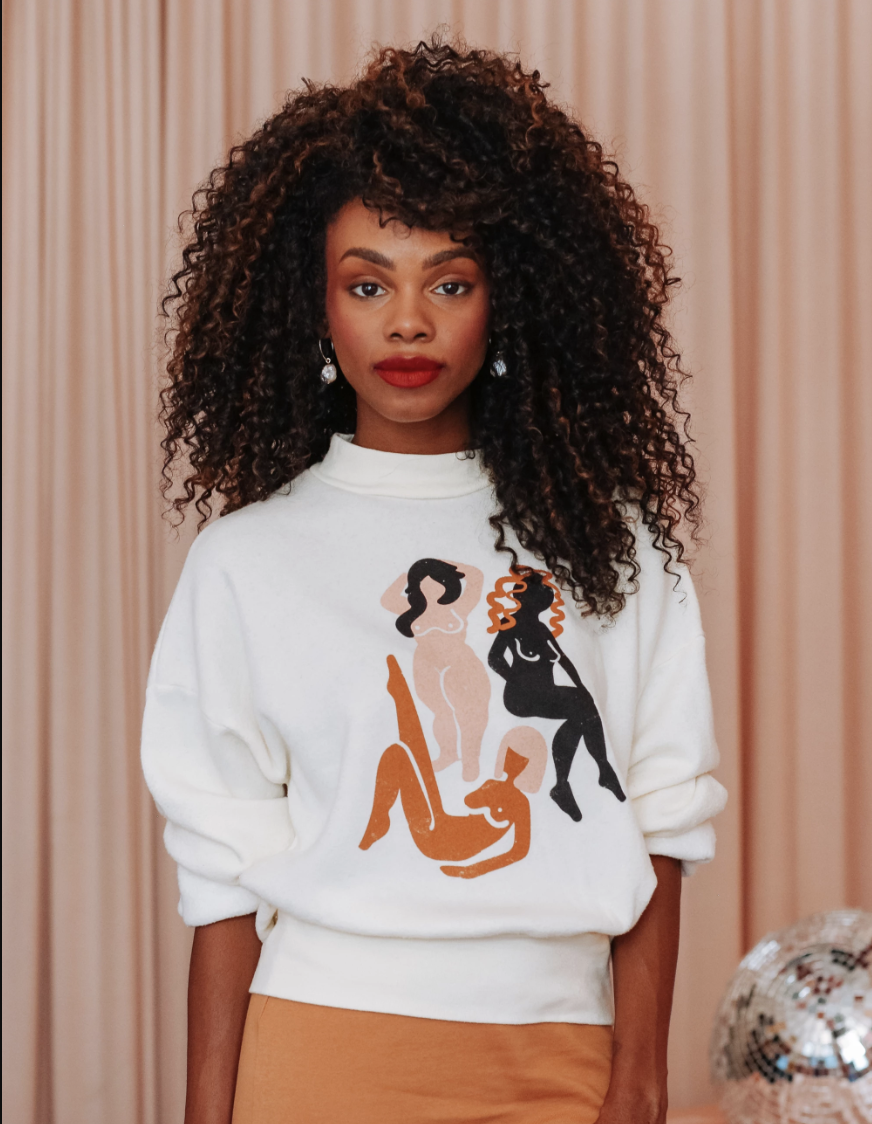
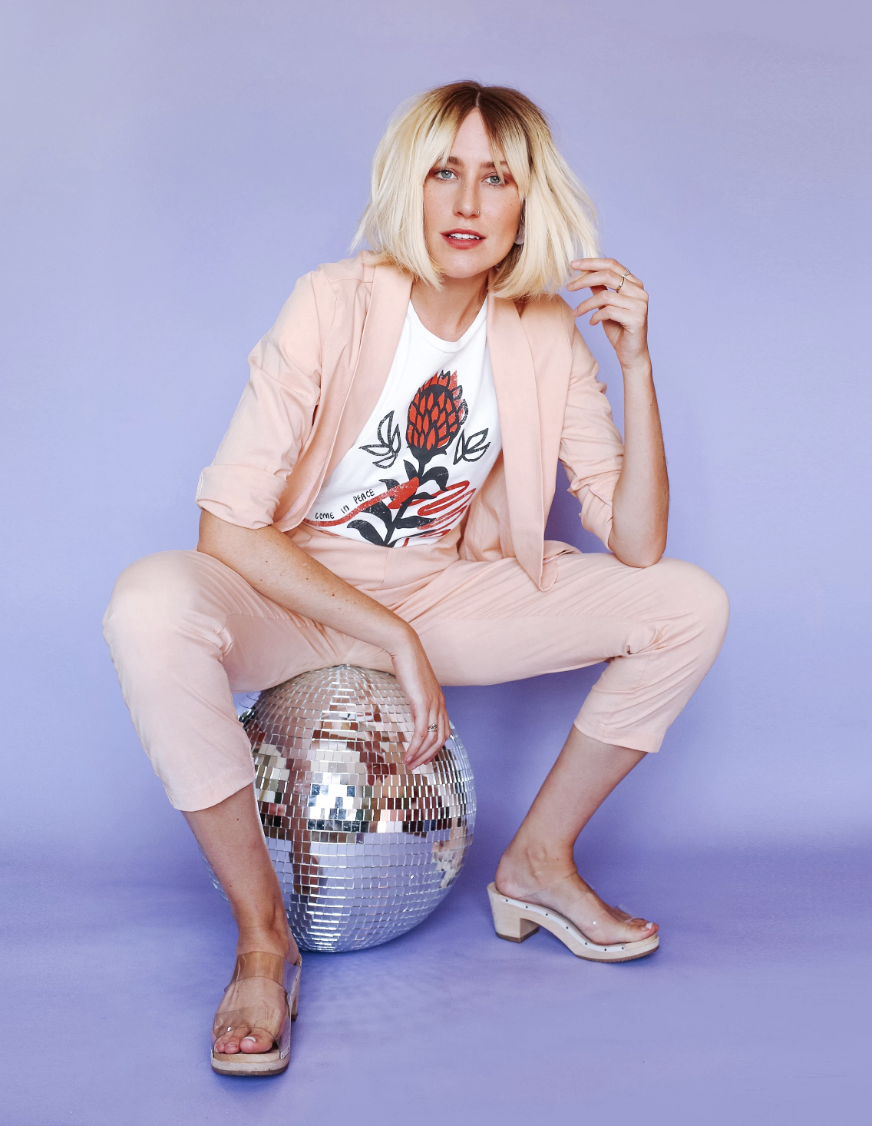
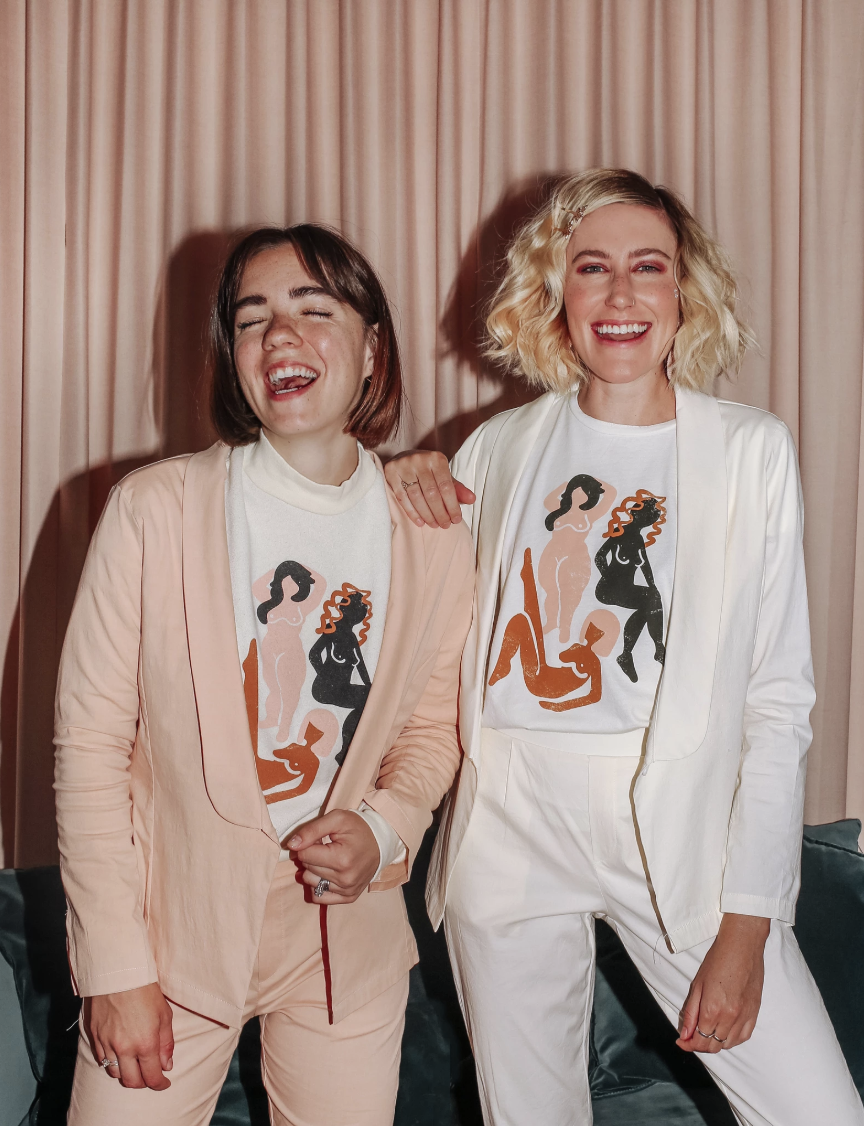
C&C: How did you find the manufacturer/production facility that you use? What advice do you have for other founders looking for a trustworthy manufacturer?
DN: “I didn’t find my current production partner until I was six months in. I was basically working with whatever I could find on Google, and it was really limiting my creativity. I went to MAGIC, the big fashion tradeshow in Vegas, hoping to get some freelance clients and bump some shoulders. I ended up being introduced to my production partner, Kelly, through one of my freelance clients. We immediately hit it off and realized we had so much in common.
“We both wanted to make beautiful and creative clothing while doing so as sustainably. We came up with and perfected our made-to-order, no waste model over the past three years. He has helped me go from ‘just a t-shirt brand’ into a full-on clothing line with things like suits, dresses, and even patterned fanny packs. I would say putting yourself out there is key. Go to sourcing shows, networking events, introduce yourself to people, ask questions, send cold emails, let the world know what you’re looking for and go find it.”
“Go to sourcing shows, networking events, introduce yourself to people, ask questions, send cold emails, let the world know what you’re looking for and go find it.”
C&C: Did you self-fund the company?
DN: “Dazey is fully self-funded. I was very careful to save a ton before starting Dazey so I wouldn’t be stressed or chicken out. I had saved enough to launch the brand that I could comfortably live off for a year. It has given me the flexibility to harness my creativity and grow at a pace that felt comfortable to me as a brand new founder and businesswoman. I know all the money I make is mine and I get to make the final call on everything. I think it was the right call for me starting out and we’ve been able to grow a lot from my initial $4,000 personal investment. I don’t know what the future holds, but I may be open to the idea of investment to really help scale in the near future.”
C&C: How did you know how to pay yourself?
DN: “Well, I made the mistake of starting off my business as a sole proprietorship. Which means everything from the business was through my personal bank account. Every expense and every payout. Now I’ve learned that’s not a good practice if you’re really trying to grow a company outside of just freelance work! You really need to keep them separate. Since then, I’ve of course established a C-corp and company account.”
“My personal pay always varies depending on how the company is doing. When things are good, I allow myself to experience the benefits. When they are slow, I pull back. Last year we had an amazing year and I paid myself more than I had ever dreamed of making with my corporate jobs. This year, we’ve had a slower summer. I’ve decided to keep all of the money in the business account and live off of my savings and rental property income for awhile. A lot of founders don’t let themselves enjoy the successes and I think that can be a quick route to burnout. I like going with the flow and staying in-tune with my company.”
C&C: How big is your team now? What has the hiring process been like?
DN: “We have five people in our immediate team now. I had never hired anyone before and remember being so excited to give the first interview. We’ve gotten so lucky with our team and everyone I’ve hired since year one is still here today. Myself as the owner and CEO, Phillip our COO (who is also my amazing boyfriend), Megan who manages our Dazey Lady Shop, Naomi who helps me with content and creative, and our newest Lisa who is doing customer service and shipments. When it came to interviewing, I trusted my gut feeling. I didn’t get too hung up on resumes because I know people can easily learn on the job, just like I had.
“It was more about the conversation and connection I had with them. Things like if I could trust them, get along with them, that they cared about the company, and I think they are a hard worker. So far, it hasn’t steered me wrong. Of course, we have so many other people that are basically apart of the Dazey family, like our production team and sales showroom reps. It really takes a village, even as a super small company.”
“I had saved enough to launch the brand that I could comfortably live off for a year. It has given me the flexibility to harness my creativity and grow at a pace that felt comfortable to me as a brand new founder and businesswoman.”
C&C: Did you hire an accountant? Who helped you with the financial decisions and set up?
DN: “Yes, and I wish I would have sooner. She had to go back pretty far to correct all the unbeknownst co-mingling I did (using both my personal and business account instead of keeping them totally separate). That was totally a waste of time when I could have been working with her all along and without stress. Especially as a business begins to grow, the finances can quickly become hard to track. It’s best to start off with the right person in place so they can grow with you and make sure your books are done right. Accounting is not my forte, so why not focus on what I’m good at—making the money—and then let the professionals handle it.”
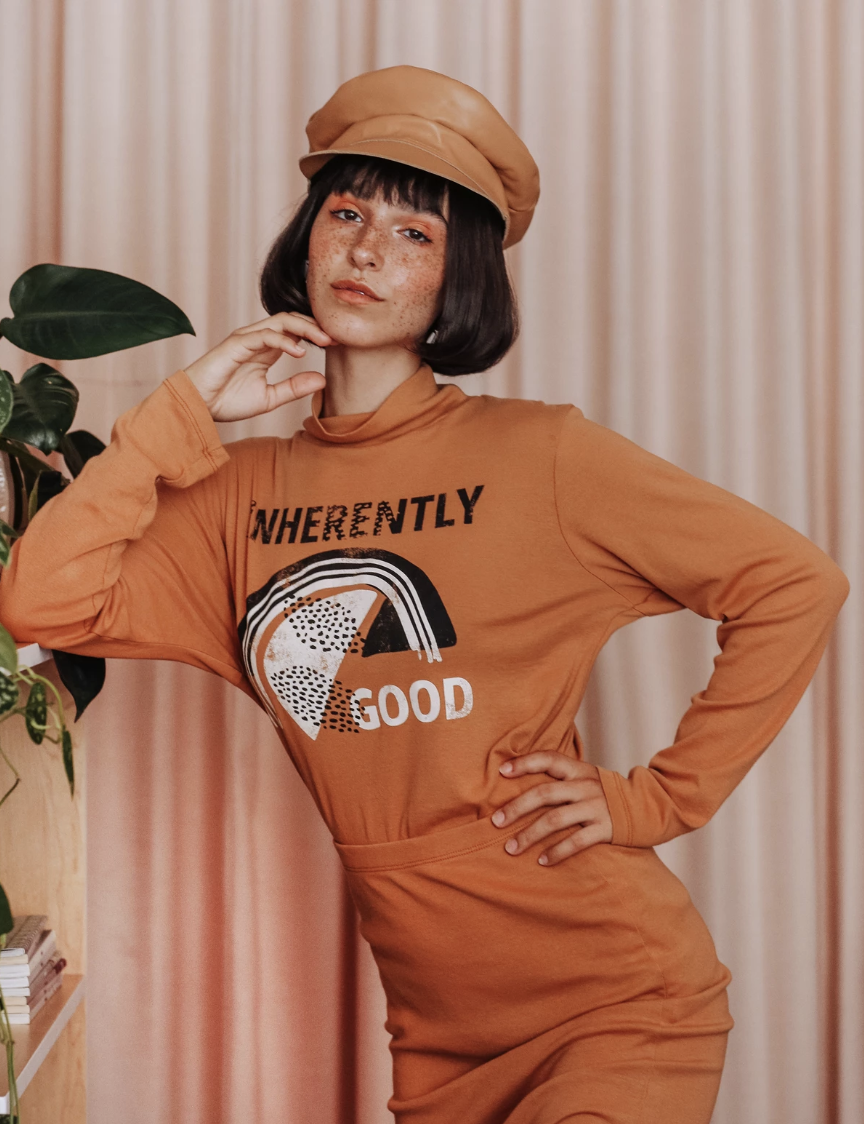
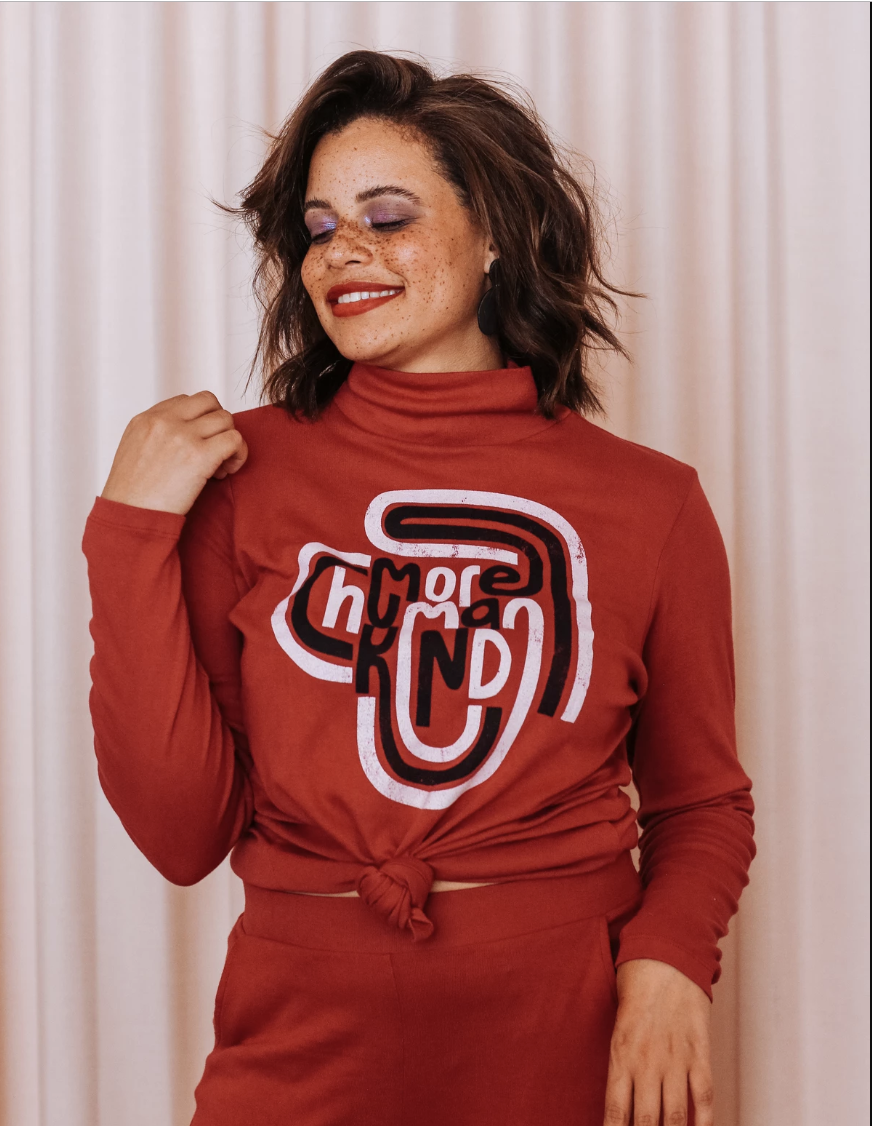

C&C: What has been the biggest learning curve during the process of establishing a business?
DN: “As somebody who has always considered themselves good with money, I’ve discovered it’s been a whole different beast as a business. You really have to stay on top of where effort and money are being spent and if the direct return merits that amount. When you start to deal with so many big numbers going in and out quickly, things can get confusing.
“Be sure to stay on track of your finances and know what number you really have in the bank (with expected income and expenses). Make decisions carefully and constantly re-evaluate spending/saving. You really do have to spend money to make money, but make sure you are smart and strategic about it.”
C&C: How did you get retailers to start stocking your product?
DN: “When I first launched Dazey, my focus was on direct to consumer selling and marketing on Instagram. I didn’t think wholesale was important at the time. I wanted to keep my production ethical but also keep my prices reasonable, which made my wholesale margins pretty dismal. I would take wholesale orders here and there if people reached out, but it wasn’t my focus. Fast forward about four years later and it has shifted to be a pretty big chunk of our business. Instagram was everything we needed to start building an engaged and supportive community. Direct website sales were growing like crazy and we thought we had it made in the shade. Then came the dreaded algorithm.
“Additionally, I will say there has been a shift in consumer behavior as more people begin to experience social-media fatigue and distrust. All that dramatically affected our online sales. We pumped up our online ad spend, but it didn’t really help either. I talked to some other entrepreneurs and they all reported the same. Semi-freaking out, I sat down with my production partner to plan our next move. He suggested we give wholesale a proper try. As an industry veteran who had spent most of his career in B2B (business to business as opposed to direct), he thought it could really help us. We had to restructure our pricing to make our margins more fair for us, and then we found a wholesale showroom.
“I walked into the Cooper fashion building in DTLA and grabbed a directory and started sending out cold emails based on the brands the showrooms already carried. We got four meetings, sat down with all of them, and found the right fit—a smaller showroom with a focus on made in USA products. It’s been a game-changer. Dazey now does amazing with wholesale and sells out of boutiques faster than they can reorder. The fact that we built a large social media following and people knew our name has made it easier than starting out with wholesale. We are now even carried by Free People who happened to just find us on Instagram.”
“Be sure to stay on track of your finances and know what number you really have in the bank (with expected income and expenses). Make decisions carefully and constantly re-evaluate spending/saving. ”
C&C: Do you have a business coach or mentor? Would you recommend one?
DN: “Kelly my production partner has been a huge mentor for me. He saw potential when Dazey was nothing and took a bet on me with blind faith. I would also say my community of fellow female entrepreneurs has been one of the biggest driving forces in both mentorship and inspiration. Peer to peer mentoring is amazing because we are all learning and growing together. Outside of Dazey, I co-founded a boutique female co-working space called Biz Babez has been a great connector and space to learn from one another.”
C&C: How did you promote your company? Did you know anything about marketing before this venture?
DN: “I had started fashion blogging in college before Instagram had even existed. I was connected with a bunch of girls via a website called lookbook.nu and when I moved to L.A., we would help each other snap photos of outfits to share on our blogs. I quit blogging when my full-time job got to be too much (this was before you could make money off of it). But many of the girls I knew kept at it and ended up becoming huge successes in the fashion blogging space.
“When I started Dazey, a lot of them were so helpful in shooting content with me and promoting. I would take all the photos myself and also snap pics of whatever they wanted in exchange. This was a great way to get the word out at the very beginning. Then once I built a following myself, I just chose to be very personal and real with my community like sharing the BTS of running a small biz. I would share my design process, my production, and really all the highs and lows of running a business. That’s when things really started to take off from word of mouth.”
“As a hyper-creative person who’s not necessarily the best at all that, I’ve also learned to lean on other people. Know what you are good at and focus on that.”
C&C: What is one thing you didn’t do in the setup process, that ended up being crucial to the business and would advise others to do asap?
DN: “Get everything in order—your bank accounts, contracts, your LLC or CORP. Read a business book and get to know the less glamorous side of small biz. As a hyper-creative person who’s not necessarily the best at all that, I’ve also learned to lean on other people. Know what you are good at and focus on that. Then hire help for the rest. Your efforts will be best spent doing what you love and what you’re good at.”
C&C: For those who haven’t started a business (or are about to) what advice do you have?
DN: “Do the damn dream. That’s printed on a Dazey tee. But honestly, the only regret I have with starting Dazey is not doing it sooner. It’s a rollercoaster but so worth it. Your dream job simply doesn’t exist—you have to create it.
“So many times I thought I knew what my ‘dream job’ was until I actually got it and realized that wasn’t the case at all. With Dazey, I’ve been able to combine all of my passions into one thing. From fashion, art, design, photography to social media, feminism, and sustainability (and even somehow interior design now). I designed Dazey to be true to everything I love and believe in. And my customers can see and feel that. If you build a business that you are undeniably passionate about, it’s damn near impossible for it to fail at it.”










